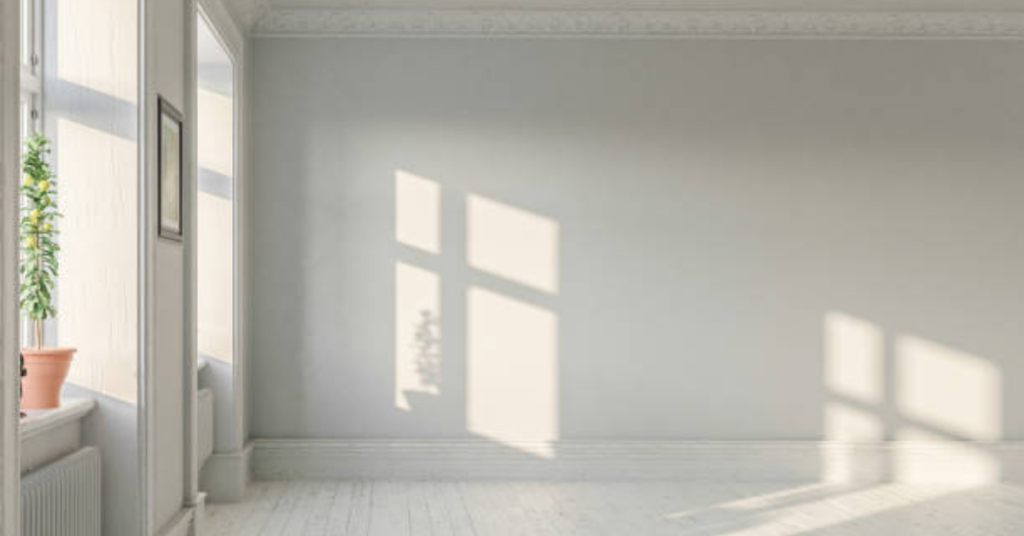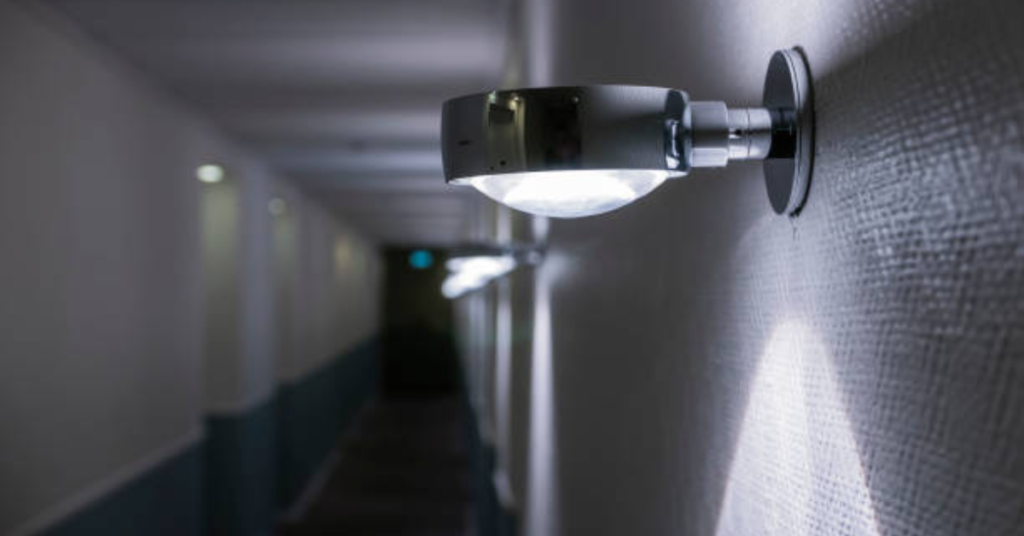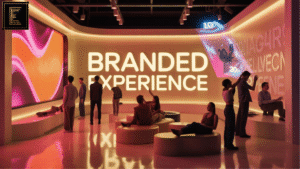If you’re wondering why is lighting important in interior design, the right lighting not only illuminates but elevates. It sets the mood, adds depth, and even influences our emotions. In this blog, we’ll dive deep into ambient lighting design, its benefits, how it differs from other types like task lighting, and how to truly experience the next level of modern interior lighting.
“Good lighting is absolutely fundamental to a space. It shapes the way we perceive a room, its size, its atmosphere, and even its function.” – Kelly Wearstler
What is Ambient Lighting in Interior Design?

“Lighting is everything. It creates atmosphere, drama, and intrigue in a room.” – Martyn Lawrence Bullard
Ambient lighting in interior design refers to the general or overall lighting of a space. It is the foundational layer of light that fills a room and provides uniform illumination. It’s not intended for specific tasks but rather to make a space feel open, warm, and inviting.
When someone asks, what is ambient lighting in interior design, think of soft overhead lights, wall sconces, or diffused lighting fixtures that bathe a room in a consistent glow. Unlike accent or task lighting, ambient lighting ensures that a room is functional while setting a pleasant tone. At Elegantize Designs, we understand the transformative power of lighting. Our team specializes in creating custom lighting plans that bring warmth, sophistication, and purpose to every room. Let us help you illuminate your dream home with elegance.
The Importance of Ambient Lighting in Interior Design
1. Living Rooms
In living rooms, ambient lighting in interior design fosters a warm, inviting environment where families gather and guests are entertained. Layering chandeliers with floor lamps ensures both functionality and style.
2. Bedrooms
Soft ambient lighting is crucial in bedrooms to promote relaxation. Wall sconces, ceiling-mounted lights, or even dimmable options allow for mood control, underlining the importance of ambient lighting for personal spaces.
3. Kitchens and Dining Areas
In these functional areas, a balance between bright ambient lighting and focused task lighting is essential. Modern pendant lights and flush mounts enhance visibility while adding to the overall ambient lighting interior design appeal.
4. Commercial Spaces
In hotels, restaurants, and retail outlets, ambient lighting in interior design significantly influences customer experience. Warm lighting can make a café feel cozy, while dynamic LED setups create an energetic vibe in showrooms.
Best Practices for Implementing Ambient Lighting in Interior Design

- Layering with Task and Accent Lighting
While ambient lighting provides the base illumination, combining it with task lighting (for focused activities) and accent lighting (for highlighting décor) enriches the overall lighting in interior design strategy. - Choosing the Right Fixtures
Selection of fixtures should align with the room’s style. Elegant chandeliers for classical interiors, minimalistic recessed lights for modern homes—these choices reflect thoughtful ambient lighting interior design. - Considering Color Temperature
The warmth or coolness of light affects ambiance. Warm white light (2700K-3000K) is suitable for living areas, while cooler temperatures (4000K-5000K) work well in workspaces. This fine-tuning demonstrates the importance of ambient lighting in influencing mood and functionality. - Using Smart Controls
Integrating smart lighting systems allows users to adjust intensity and color based on time of day or activity, perfectly complementing the concept of modern interior lighting.
Modern Interior Lighting Trends with Ambient Lighting

In the realm of modern interior lighting, ambient lighting has evolved beyond simple ceiling fixtures. Designers now incorporate innovative solutions like:
- Recessed Lighting: Minimalistic and sleek, recessed lights provide seamless illumination, perfect for contemporary homes.
- Cove Lighting: Indirect lighting through ceiling coves adds a soft glow, enhancing the elegance of interiors.
- LED Strips and Smart Lighting: Energy-efficient and customizable, LED ambient lighting offers versatility in color and intensity, a must-have in modern interior lighting design.
These trends showcase how ambient lighting interior design adapts to modern needs while maintaining its essential role in enhancing aesthetics and comfort.
Overcoming Common Ambient Lighting Mistakes
While planning ambient lighting in interior design, avoid these common pitfalls:
- Relying on a Single Light Source: A single ceiling fixture often creates flat lighting. Layering different light sources adds depth and interest.
- Ignoring Dimmers: Without dimmable options, lighting can become too harsh or too dull. Always opt for dimmers for greater control.
- Mismatched Color Temperatures: Mixing different color temperatures can create visual discomfort. Maintain consistency for a harmonious look.
Addressing these issues underscores the importance of ambient lighting in achieving a well-balanced interior environment.
The Future of Ambient Lighting in Interior Design
As technology evolves, the future of ambient lights looks promising. Innovations in energy-efficient LEDs, human-centric lighting, and AI-driven smart controls are transforming how we perceive lighting in interior design. Customizable lighting scenes, responsive to both time and mood, are becoming the norm in modern interior lighting solutions.
Furthermore, sustainable materials and eco-friendly designs are shaping the way ambient lighting is integrated into interiors, ensuring that functionality meets environmental responsibility.
Types of Light in Interior Design
There are three main types of light in interior design:
- Ambient Lighting: General, overall illumination.
- Task Lighting: Focused, functional lighting.
- Accent Lighting: Decorative lighting to highlight features.
Each serves a unique purpose and combining all three creates a well-rounded, stylish space.
Conclusion
To truly experience the next level of modern interior lighting, ambient lighting must be thoughtfully integrated into your design strategy. From setting the mood to defining the function of a space, its impact is undeniable. Ambient Lighting in Interior Design is far more than just a functional necessity. It is an art form that shapes the ambiance, enhances spatial perception, and ties together the visual narrative of any space. By understanding the importance of ambient lighting and incorporating it thoughtfully into modern interior lighting plans, you can elevate your interiors to new levels of sophistication and comfort.
Whether you’re working with a luxury apartment in New York or a quaint family home, ambient lighting interior design should never be overlooked. The magic lies in the details—temperature, placement, and synergy with other lighting types.
FAQs
1. What is ambient lighting in interior design? Ambient lighting is the primary source of light in a room, designed to provide overall illumination and set a consistent tone or mood.
2. Why is lighting important in interior design? Lighting enhances mood, increases functionality, highlights design elements, and brings harmony to a space.
3. What is task lighting in interior design? Task lighting provides focused illumination for specific tasks such as reading, cooking, or working.
4. What are the types of light in interior design? The three main types are ambient, task, and accent lighting. Each plays a different role in creating a complete lighting experience.
5. What are the benefits of ambient lighting? Benefits include even light distribution, improved ambiance, reduced eye strain, and flexibility in design aesthetics.







